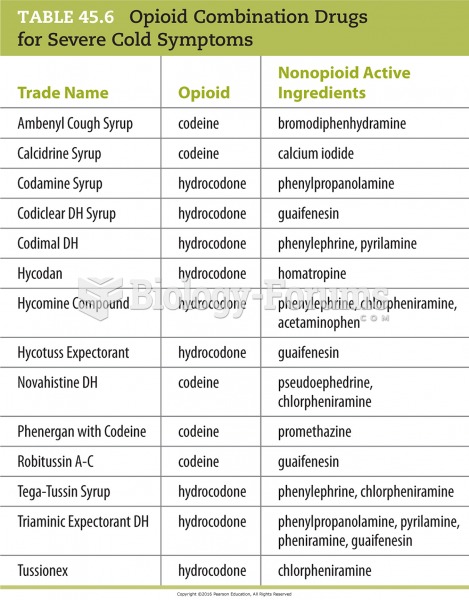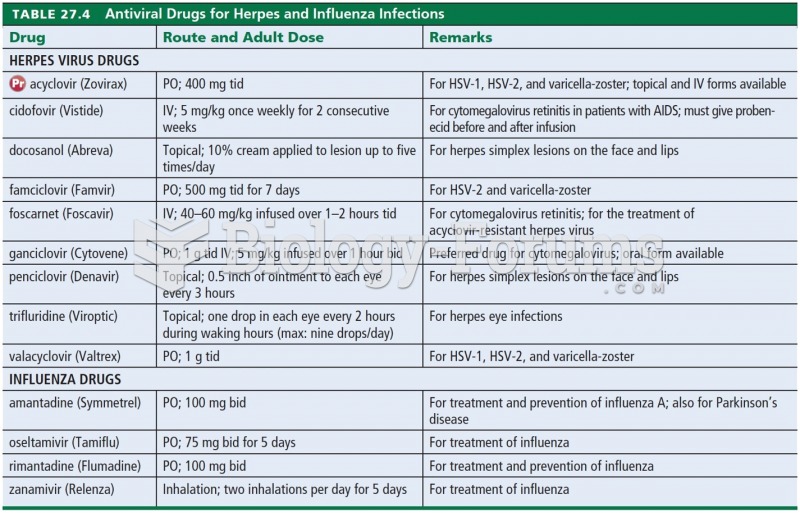|
|
|
Once thought to have neurofibromatosis, Joseph Merrick (also known as "the elephant man") is now, in retrospect, thought by clinical experts to have had Proteus syndrome. This endocrine disease causes continued and abnormal growth of the bones, muscles, skin, and so on and can become completely debilitating with severe deformities occurring anywhere on the body.
The immune system needs 9.5 hours of sleep in total darkness to recharge completely.
Blood is approximately twice as thick as water because of the cells and other components found in it.
Long-term mental and physical effects from substance abuse include: paranoia, psychosis, immune deficiencies, and organ damage.
In most cases, kidneys can recover from almost complete loss of function, such as in acute kidney (renal) failure.







